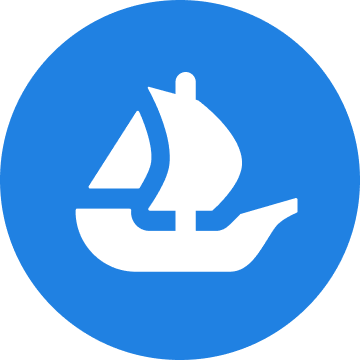What is OpenSea?
OpenSea is a prominent online marketplace that specializes in the buying, selling, and trading of non-fungible tokens (NFTs). Launched in 2017, it has emerged as a leading platform within the rapidly evolving landscape of digital assets. The platform was created in response to the burgeoning interest in blockchain technology and digital ownership, providing a space where users can explore and acquire unique digital items.
As a decentralized marketplace, OpenSea operates on blockchain technology, which underpins the concept of NFTs. Each NFT represents a distinct item, whether it be digital art, collectibles, virtual goods, or even virtual real estate. This decentralization is crucial as it eliminates intermediaries from transactions, allowing creators and collectors to engage directly with one another. Users can create, categorize, and trade their NFTs with relative ease, fostering a diverse ecosystem of digital assets.
OpenSea supports various types of digital goods, enabling users to access an extensive collection that ranges from digital art pieces and music files to in-game items and domain names. The significance of blockchain technology in this marketplace cannot be overstated; every transaction is recorded on the blockchain, ensuring transparency and security. This not only protects buyers and sellers but also guarantees the provenance of digital assets, confirming that the items purchased are indeed unique and verifiable.
In essence, OpenSea serves as a comprehensive platform for anyone interested in the world of NFTs, bridging the gap between creators and consumers in a secure and efficient manner. By leveraging blockchain technology, OpenSea has established itself as a vital player in the digital goods marketplace, enabling a myriad of opportunities for creators and collectors alike.
Key Features of OpenSea
OpenSea stands as a prominent player in the world of non-fungible tokens (NFTs), primarily due to its diverse range of features that cater to both newcomers and experienced collectors. One of the most notable aspects of OpenSea is its user-friendly interface, which simplifies navigation and transaction processes. The platform empowers users to easily browse, buy, and sell NFTs from various categories, including art, music, and virtual real estate, creating an engaging experience for participants at all levels.
Another significant benefit of OpenSea is its support for multiple cryptocurrencies. Users can conduct transactions using Ethereum (ETH) and a variety of other cryptocurrencies, providing flexibly to a broader audience. This flexibility enhances the overall experience and encourages a more extensive adoption of NFTs, as users are not confined to a single payment method. The platform periodically updates its supported tokens, ensuring that it remains in sync with the dynamic cryptocurrency landscape.
OpenSea also provides tools for creators to mint their NFTs directly on the platform. This feature democratizes the NFT creation process, allowing artists and content creators to easily turn their work into digital assets without having to navigate complex blockchain technologies independently. The process is intuitive, significantly lowering the barrier to entry for potential creators, thus contributing to a rich ecosystem of unique digital collectibles.
Additionally, OpenSea offers multiple sales options, including auctioning and fixed-price listings. This flexibility allows sellers to choose the method that best suits their strategy and target audience, creating a dynamic marketplace where buyers can find a variety of purchasing options. Coupled with advanced search capabilities, users can efficiently locate specific NFTs or explore a wide range of categories, making it an essential destination for NFT enthusiasts.
Benefits of Using OpenSea
OpenSea, as a prominent NFT marketplace, offers a myriad of benefits that appeal to artists, collectors, and investors alike. One of the primary advantages is the vast selection of NFTs available on the platform. Users can explore a diverse range of digital artwork, collectibles, virtual real estate, and other unique digital assets. This extensive inventory enables individuals to discover lesser-known artists alongside renowned creators, creating a vibrant ecosystem for art enthusiasts and investors.
Moreover, OpenSea is renowned for its strong community and network of artists and collectors. This thriving community fosters collaboration and supports creativity, as users can directly interact with creators to discuss their work or commission custom pieces. This interaction not only enriches the experience for both parties but also encourages a deeper appreciation for the art being shared on the platform. As such, OpenSea promotes a sense of belonging among its users, which is vital for an effective marketplace.
Security is another significant benefit of using OpenSea. The platform implements robust security features designed to protect users against fraud, ensuring that transactions are secure and reliable. OpenSea leverages blockchain technology, which provides transparency and authenticity for every NFT transaction, reassuring buyers and sellers alike. This level of security is a critical factor, particularly in an arena where digital assets can be vulnerable to scams and theft.
In addition to these features, OpenSea facilitates accessibility by allowing users to engage directly with creators, reducing gatekeeping that often occurs in traditional art markets. The decentralized nature of the marketplace is another compelling benefit, as it removes geographical constraints and empowers individuals from various locations to participate in the growing NFT economy. This democratization of art acquisition and creation exemplifies the transformative potential of platforms like OpenSea.
Getting Started on OpenSea: A Beginner’s Guide
Entering the world of non-fungible tokens (NFTs) through OpenSea can be an exciting venture, but it requires careful preparation to ensure a smooth experience. The first step in this journey is setting up a digital wallet compatible with Ethereum, as this is the primary cryptocurrency used on the platform. Some popular wallets include MetaMask, Coinbase Wallet, and Fortmatic. After installing a wallet extension or app, you will need to create an account and securely store your recovery phrase – this phrase is crucial in case you need to recover your wallet.
Once your wallet is active, the next step involves purchasing Ethereum, which you can obtain through various exchanges such as Coinbase or Binance. After buying Ethereum, transfer the cryptocurrency to your digital wallet in order to fund your transactions on OpenSea. Be mindful of transfer fees and ensure you have sufficient Ethereum to cover both your purchases and the gas fees associated with transactions on the Ethereum blockchain.
Now that your wallet is ready and funded, navigate to the OpenSea platform. Here, you can start exploring the extensive collection of NFTs available for purchase. As a beginner, it’s advisable to familiarize yourself with the various categories and search functionalities. Once you find an NFT that interests you, you can buy it outright or place an offer. If you plan to sell your own items, click on the “Create” button to list your NFTs. Ensure to set a competitive price and provide engaging descriptions to attract potential buyers.
Engaging with the OpenSea community is also essential. Participate in discussions, follow creators, and join relevant online groups to enhance your understanding of the marketplace. Be cautious of common pitfalls, such as dealing with scams or overlooking transaction fees, which could lead to unanticipated losses. With these steps and guidelines, you can confidently navigate the vibrant world of NFTs on OpenSea.




